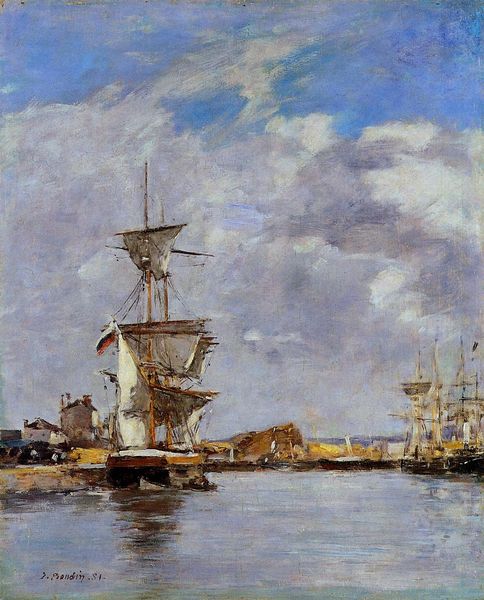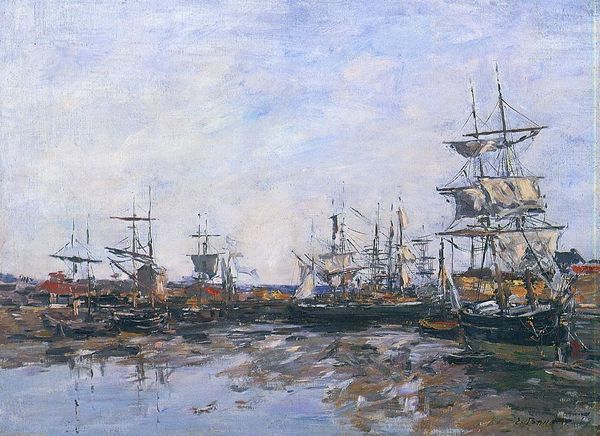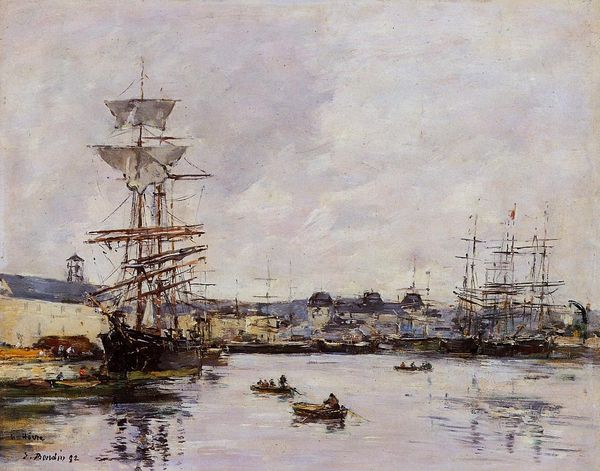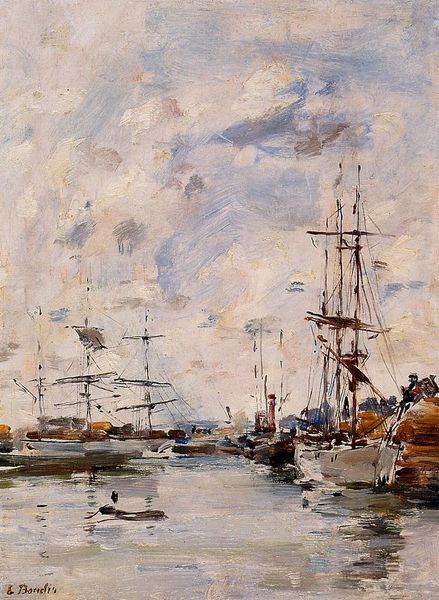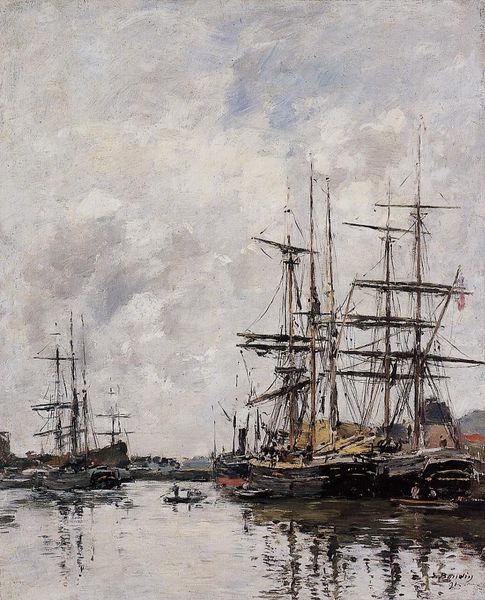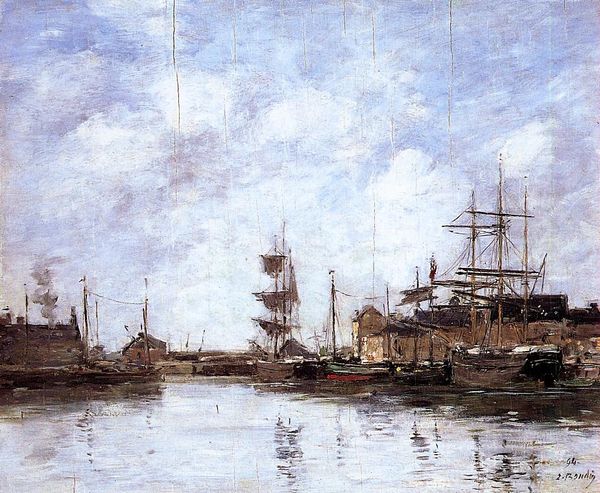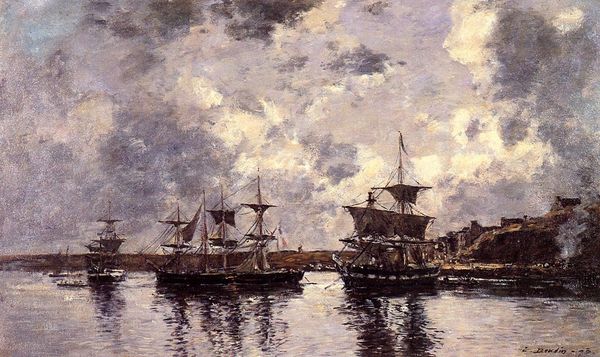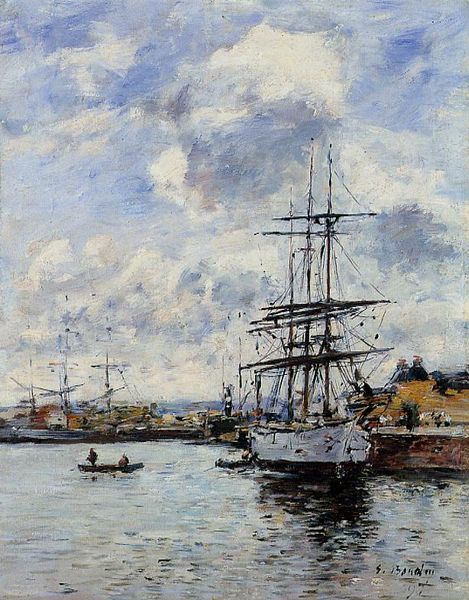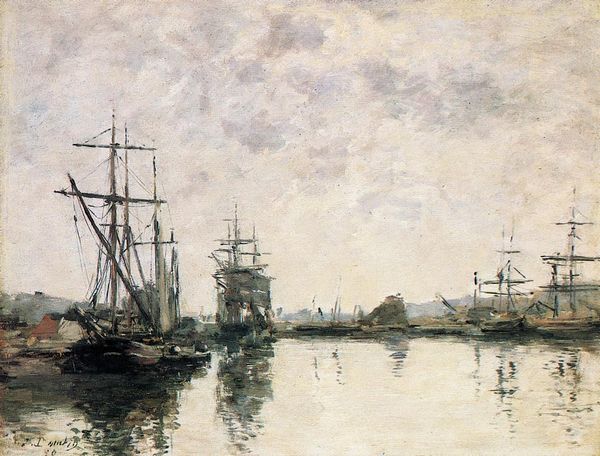
painting, oil-paint
#
boat
#
ship
#
painting
#
impressionism
#
impressionist painting style
#
oil-paint
#
vehicle
#
landscape
#
impressionist landscape
#
oil painting
#
ocean
#
france
#
water
#
line
#
cityscape
#
sea
Copyright: Public domain
Editor: This is "The Deauville Basin," an oil painting by Eugène Boudin, created in 1887. I’m immediately struck by the… business of the scene. So many boats, masts, and what looks like a very active shoreline. What do you see in this piece, from your perspective? Curator: For me, Boudin’s "Deauville Basin" isn't just a pretty seascape; it’s a window into a specific socio-economic moment in late 19th-century France. Deauville was rapidly becoming a playground for the bourgeoisie, a space where wealth and leisure were increasingly visible. The boats themselves represent a complex interplay of commerce, travel, and pleasure. Considering France’s colonial activities, do you think these ships simply carried wealthy vacationers, or is there another history they represent? Editor: That's a good question! I hadn’t thought about the link to colonialism. So, these boats, while beautiful, might also represent a more troubling side of French society? Curator: Precisely. Boudin's skillful brushwork captures the shimmering light and bustling atmosphere of the port, yet we can also consider the less visible aspects. Think about who benefited from this increased maritime activity and who might have been excluded or exploited. Even the impressionistic style, with its emphasis on fleeting moments, can be interpreted as a reflection of the transient nature of wealth and privilege. Do you think it's possible for a painting to be both beautiful and socially critical? Editor: Absolutely. It’s like the beauty draws you in, but then you start to unpack the layers and complexities beneath the surface. It makes you think about the bigger picture. Curator: Exactly. Boudin invites us to appreciate the aesthetic qualities while also prompting us to critically examine the historical and social context in which it was created. It’s this tension that makes it such a compelling piece. Editor: This makes me think about the social responsibility of artists and how their work can engage with broader political themes, even when seemingly focused on a tranquil scene. Thanks for this insight!
Comments
No comments
Be the first to comment and join the conversation on the ultimate creative platform.
